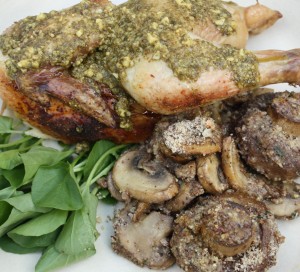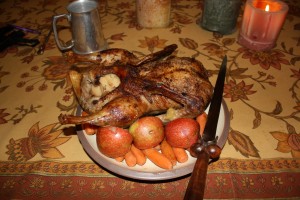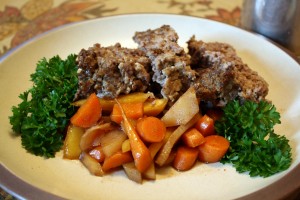Bouillabaisse
Bouillabaisse, a traditional fish stew that originated from the port city of Marseille, is a soup containing various kinds of cooked fish, shellfish, and vegetables, and flavored with a variety of herbs and spices. Many French families created their own variation of this standard recipe by adding different vegetables (celery, zucchini, squash, etc.), as well as herbs and spices including garlic, orange peel, basil, bay leaf, fennel, and saffron.
In earlier recipes, traditional bouillabaisse contained three kinds of fish, typically scorpion fish, sea robin, and the European conger and could include bream, turbot, monkfish, mullet, or silver hake. The dish would also traditionally include various shellfish and other seafood options including sea urchin, mussels, velvet crab, spider crab, or octopus. More expensive versions would include langoustine or European lobster. Many of the fish and seafood options listed above can be difficult to find at a standard fish market or grocery store.
This particular dish can be made by substituting any local or regional fish or shellfish. The recipe below fairly represents the traditional dish with some modern twists.
INGREDIENTS
1 large leek, sliced
1 lb. of tomatoes skinned, seeds removed, and diced
4 medium cloves of garlic, minced
2 ribs of celery, diced with leaves intact
2 tb of chopped fresh parsley
1 medium bay leaf
1 tb green onion, finely chopped
1/8 tsp. of black pepper
2 tb olive oil
4 cups of chicken broth
2 medium potatoes or turnips, sliced
1 and ½ lbs. of white fish, cut into 2-inch pieces
¾ fillets of red snapper, cut into 2-inch pieces
12 small fresh clams
½ lbs. of medium shrimp (31-35/pound), shelled and deveined
1/8 tsp. of ground saffron or turmeric
½ lbs. of calamari, cut into 1-inch pieces (optional)
¼ lb. of medium scallops, washed and quartered (optional)
TECHNIQUE
In a large saucepan, sauté the leek and tomatoes in the olive oil with the garlic, parsley, bay leaf, and pepper for about 4 minutes on medium heat. Add the clams to the mixture along with the optional calamari and scallops and continue to cook for three more minutes.
Add the broth, potatoes or turnips, and the saffron or turmeric and cook for 5 more minutes. Bring to a boil and then reduce to low heat, adding the rest of the fish (not the shrimp) and simmer for an additional 5-7 minutes. Add the shrimp and simmer for an additional 5-7 minutes. Stir gently now and then, avoid breaking up the fish. Remove from the heat once the shrimp is done (bright pink and tender). Remove the bay leaf and garnish with the green onion before serving. Makes 16 cups.
In Marseille, the broth is served as a starter course in a bowl containing the toasted bread and rouille, a mayonnaise made from olive oil, bread crumbs, garlic, saffron, and cayenne pepper. The recipe for rouille is provided below for your benefit.
3 tb water
3/4 cup coarse fresh bread crumbs (preferably from a baguette, crust removed)
3 garlic cloves
1/2 tsp. coarse sea salt
1/2 tsp. cayenne pepper
3 tb extra-virgin olive oil
Rouille is made by gently adding water over the bread crumbs in a bowl. Mash the garlic into a paste with sea salt and cayenne using a mortar and pestle or the flat edge of a knife. Add the moistened bread crumbs and mash into garlic paste. Add the olive oil in a gradually mashing and stirring vigorously with pestle until combined very well.






